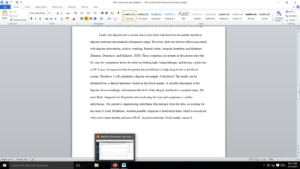Therapeutic range
THEME OF THE WEEK: ORDERING A CORRECT DIAGNOSTIC WORKUP
You are working in the CVICU on night shift and are asked to come see a patient urgently. Upon entering the room, you see a 62 year old male sitting up in bed appearing anxious. The patient has been admitted from an outside hospital 6 days prior for new onset atrial fibrillation. The patient was started on digoxin (the patient could not be started on amiodarone due to elevated AST/ALT levels.) and has achieved a therapeutic range. The patients was last in normal sinus rhythm, and improving. Cardiology was considering the need for long term anticoagulation and none have been started as of yet. Patient began having nausea and vomiting at shift change and was given ondansetron with minimal relief. Patient is now reporting that his chest does not feel right and he is seeing halos around lights. The nurse reports the patient has been becoming lethargic and bradycardic. The patient had a stat ECG showing bradycardia with a first degree AV block. Vitals are listed below:
Vitals: P-49, RR-22, BP-117/77, O2-95%. Temp-37.5
Write what diagnostics (imaging, labs, procedures) you would order for this patient. Be sure to cover everything that can be a “can’t miss” diagnosis. Explain the justification (“medical decision making”) for each test you are ordering. Also include your most likely diagnosis.
Submission Instructions:
- Your initial post should be at least 500 words, formatted, and cited in current APA style with support from at least 2 academic sources.
- You should respond to at least two of your peers by extending, refuting/correcting, or adding additional nuance to their posts.
- All replies must be constructive and use literature where possible. They must be at least 100 words and supported by at least one source.
- Please post your initial response by 23:59 Thursday, and comment on the posts of two classmates by 23:59 Sunday.
- You can expect feedback from the instructor within 48 to 72 hours from the Sunday due date.
Requirements: Just answer the question I’m detail
Answer preview
Lastly, the digoxin test is crucial since it has been indicated that the patient started on digoxin treatment and attained a therapeutic range. However, there are adverse effects associated with digoxin intervention, such as vomiting, blurred vision, irregular heartbeat, and dizziness (Bauman, Domenico, and Galanter, 2016). These symptoms are present in the patient since the 62-year-old complained about the chest not feeling right, being lethargic, and having a pulse rate of 49. It may be suspected that the patient has insufficient or high drug levels in the blood system. Therefore, I will undertake a digoxin test sample of the blood. The results can be obtained from a clinical laboratory based on the blood sample. A suitable adjustment of the digoxin dose accordingly and reinstate the level of the drug in the blood to a normal range. My most likely diagnosis for the patient after analyzing the tests and symptoms is cardiac arrhythmias. The patient is experiencing arrhythmia that emerges from the atria, accounting for the onset of atrial fibrillation. Another possible diagnosis is bradyarrhythmia which is associated with a slow heart rhythm and rate of P-49. An atrioventricular block mainly causes it.
[763 Words]

Therapeutic range

